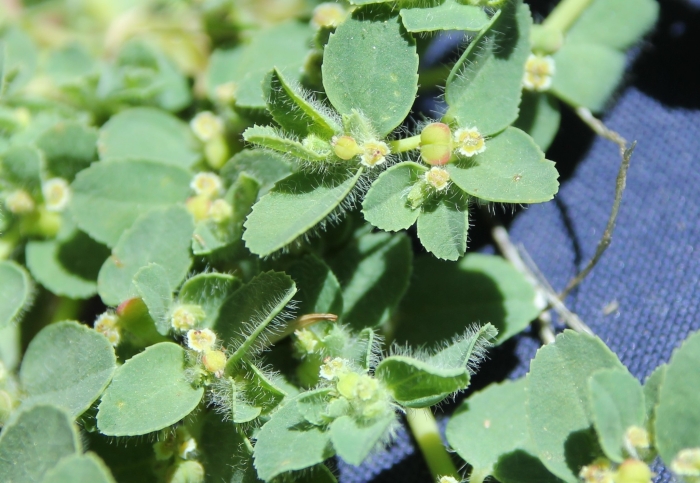Thymeleaf Sandmat
(Euphorbia serpyllifolia)
Thymeleaf Sandmat (Euphorbia serpyllifolia)
/
/

Millie Basden
CC BY 4.0
Image By:
Millie Basden
Recorded By:
Copyright:
CC BY 4.0
Copyright Notice:
Photo by: Millie Basden | License Type: CC BY 4.0 | License URL: http://creativecommons.org/licenses/by/4.0/ | Rights Holder: Millie Basden | Publisher: iNaturalist | Date Created: 2018-06-07T12:33:59-07:00 |






















Estimated Native Range
Summary
Euphorbia serpyllifolia, commonly known as thymeleaf sandmat, is an annual herbaceous plant native to a wide range of habitats including open woodlands, grasslands, and disturbed sites across North America, from Canada to Mexico. This species typically forms prostrate mats but can also grow erect, reaching heights of up to 12 inches (30 cm). The leaves are small, oblong, and resemble the leaves of thyme, growing up to 1 inch long. Thymeleaf sandmat blooms from late spring to early fall, producing tiny white cyathia flowers that are not particularly showy but are characteristic of the Euphorbiaceae family.
Thymeleaf sandmat is valued for its drought tolerance and ability to thrive in poor, sandy soils, making it a suitable choice for xeriscaping and restoration projects. It is also used in traditional medicine by Native American groups for its cathartic and emetic properties. In cultivation, it requires minimal care, thriving in full sun to part shade and tolerating a range of soil types, provided they are well-drained. While not commonly used in ornamental gardening, it can serve as a ground cover in naturalized areas. Gardeners should be cautious, as the sap of Euphorbia species can be irritating to the skin and toxic if ingested.CC BY-SA 4.0
Thymeleaf sandmat is valued for its drought tolerance and ability to thrive in poor, sandy soils, making it a suitable choice for xeriscaping and restoration projects. It is also used in traditional medicine by Native American groups for its cathartic and emetic properties. In cultivation, it requires minimal care, thriving in full sun to part shade and tolerating a range of soil types, provided they are well-drained. While not commonly used in ornamental gardening, it can serve as a ground cover in naturalized areas. Gardeners should be cautious, as the sap of Euphorbia species can be irritating to the skin and toxic if ingested.CC BY-SA 4.0
Plant Description
- Plant Type: Herb
- Height: 0.1-0.5 feet
- Width: 0.5-1 feet
- Growth Rate: Rapid
- Flower Color: Green, Yellow
- Flowering Season: Summer
- Leaf Retention:
Growth Requirements
- Sun: Full Sun, Part Shade
- Water: Low
- Drainage: Medium, Fast
Common Uses
Low Maintenance
Natural Habitat
Open woodlands, grasslands, and disturbed sites across North America
Other Names
Common Names: Thymeleaf Sandmat
Scientific Names: , Euphorbia serpyllifolia, Euphorbia serpyllifolia,
GBIF Accepted Name: